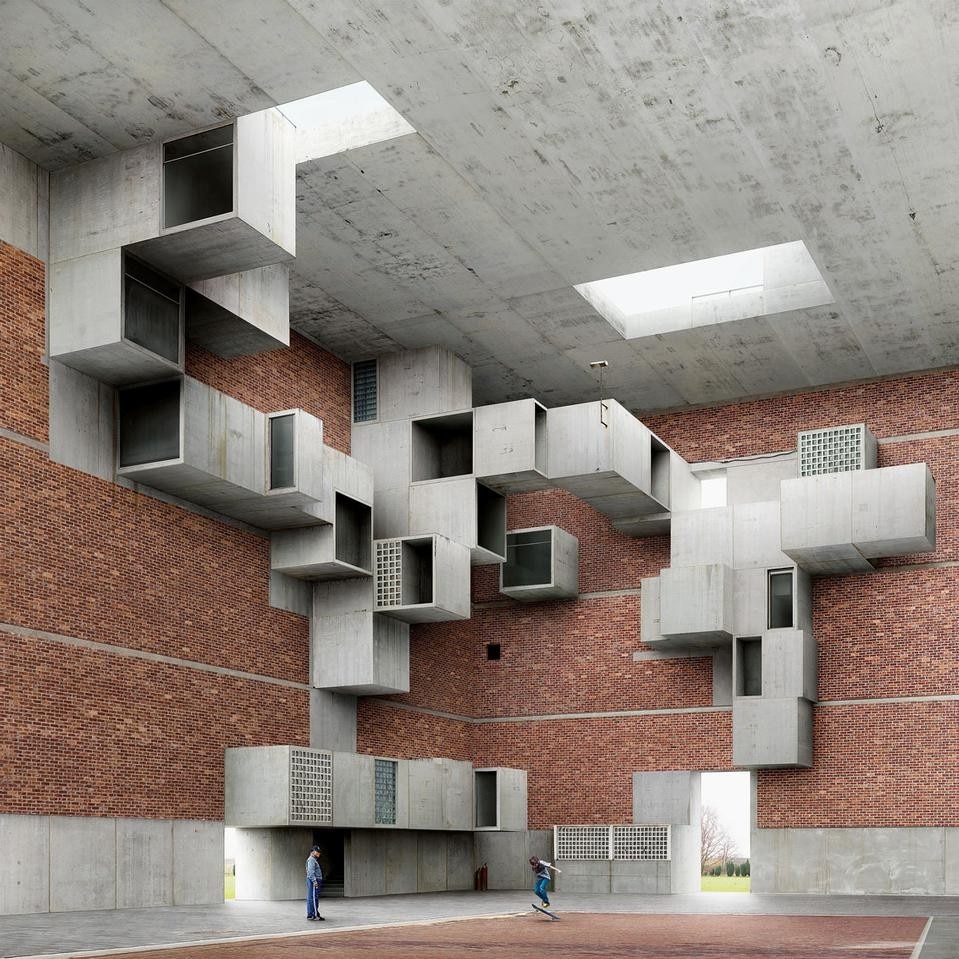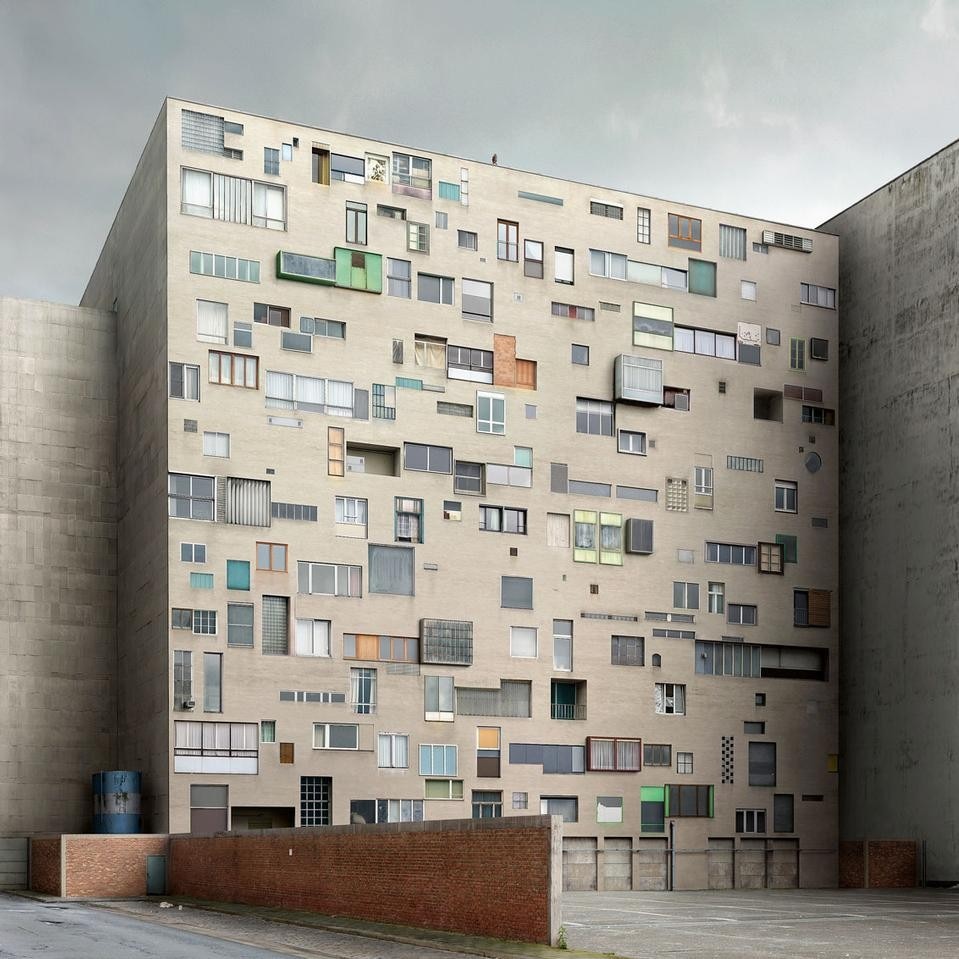Many architects are face-lifting, inflating or blasting the modernist block that in many of its sites, often originally on the urban perimeter, have created zones of social and environmental unrest. Where their revitalisation schemes are ofttimes driven by a sense of practicality – of new cleanliness through full glass sur faces and parasitic structures living on the existing rigid systems – it is the work of the occasional ar tist that brings the modernist vision to a different level all completely. A few years ago Filip Dujardin, a Flemish artist, started reconstructing a new idiom out of the modernist condition. It suggests a so far undiscovered modernist reality of extreme cantilevers that take Frank Lloyd Wright's ambitions to the extreme, of alien iconic shapes that make Rem Koolhaas look conser vative, and of intense living blocks that bring the necessar y joie-de-vivre to Le Corbusier's ideas. People often expect Dujardin's "buildings" to be undiscovered pieces of Eastern European or Russian constructivism; while in fact, they only exist in Dujardin's prints. They are the result of his scouting trips around Belgium, where he collects the occasional wonder ful moment of often fairly conventional 20th-century structures, and then uses them as digital matter from which to collage his buildings.
Dujardin's approach is reminiscent of Colin Rowe and Fred Koetter's 1978 Collage City, which describes the technique of collage as a way to utilise certain objects and things in a new context without necessarily having to trust them fully in their original setting. Dujardin does not share that conviction either, but as Rowe and Koetter express, these moments do allow him to create a strategy that may turn the utopian illusion of immutability into potential stimuli for a reality of change, movement, action and history.
Dujardin's works occupy an interesting edge condition between reality and fiction that may occasionally enable us to allow for a little more flair in the current revitalisation of the modernist block. Perhaps a fanatical pastiche of Modernism on Modernism may turn otherwise dreary moments into monuments of their own.



